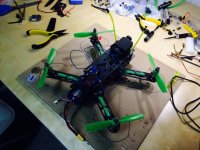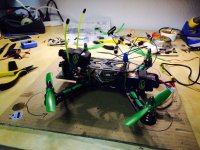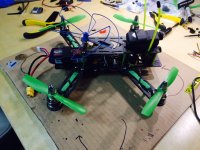dtw
KC1UAV
Yes, the amperage is what you want to look at on chargers. So if you're charging a 3.3amp or 3300mah battery that charges at 5C, then you'll need 16.5 amps from the charger, which this one does, and even if you're only able to charge some batteries at 3C/4C, it'll still be pretty quick.
$299 gets you the Naza v2 system - pretty much, it's the same price everywhere, so... You could get both at Amazon.. GetFPV.com are great people, though, too...
I buy most Tx/Rx video, etc. from RMRC, if RMRC is out or doesn't have an item, I get it from GetFPV. For batteries, there's no better place than HobbyKing, and/or cheap stuff. HobbyWireless has good video transmitters. I've purchased from rc711.com (sometimes the least expensive for newer stuff - don't expect support though), helidirect.com (really good, great support, but not the lowest prices), helipal.com (good service, nice people, not the cheapest), multirotorsuperstore.com, dronematters.com, massiverc.com - list goes on and on, but the first ones I shop at the most. eBay is where you'll get rooked, so... just be careful there.
$299 gets you the Naza v2 system - pretty much, it's the same price everywhere, so... You could get both at Amazon.. GetFPV.com are great people, though, too...
I buy most Tx/Rx video, etc. from RMRC, if RMRC is out or doesn't have an item, I get it from GetFPV. For batteries, there's no better place than HobbyKing, and/or cheap stuff. HobbyWireless has good video transmitters. I've purchased from rc711.com (sometimes the least expensive for newer stuff - don't expect support though), helidirect.com (really good, great support, but not the lowest prices), helipal.com (good service, nice people, not the cheapest), multirotorsuperstore.com, dronematters.com, massiverc.com - list goes on and on, but the first ones I shop at the most. eBay is where you'll get rooked, so... just be careful there.



